
COVER STORY
Rebel with a Cause: A Tribute to Gadar Hero Bhagat Singh Bilga
In his death the country lost a voice for the masses, an institution, a living history, a, visionary and in the words of Gurmeet, secretary of Desh Bhagat Yadgar Committee, a youthful Baba, who never asked anything for himself and gave all he could in the cause of left unity and a pluralistic and just society free of all exploitation. With him truly an era ended, since he was the last surviving member of the legendary Gadar Party, writes Ved Prakash Vatuk.
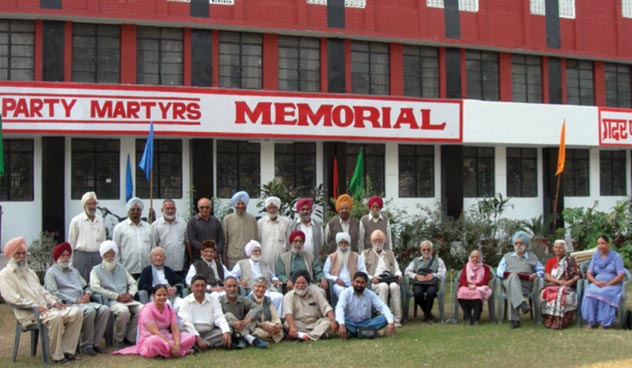
(Above): Members of the Desh Bhagat Yaadgar Committee in Jalandhar.
It was a very pleasant winter morning in 1997. Professor Jagmohan Singh, an activist nephew of Shahid-e-azam Bhagat Singh has just dropped me in front of the grand monument Desh Bhagat Yadgar Hall situated at the Grand Trunk Road in Jalandhar. I went there to meet the last surviving member of the legendary Gadar Party, Bhagat Singh Bilga, whom Prime Minister Inder Kumar Gujral called a legend. A year before the Gadar Memorial Committee in San Francisco Bay Area had celebrated Gadar Party’s youngest and bravest martyr Kartar Singh Sarabha’s centenary and Baba Bilga, as he was lovingly called, was invited to it as the chief guest. But he did not come. I was wondering why. Therefore, on my next trip to India I went to see him and ask him why he did not come.
Babaji was just getting up in a small room at the back of the Yadgar Hall’s office. Sitting on a charpai, he was just getting dressed in his white kamiz and pajama and turban. There was not much of anything else in the room. I was taken there by a trustee and introduced to him. Babaji said, “Oh, yes, I know about you. When most of the rulers are busy in robbing the nation, you are one of the few who are trying to revive the memory of our martyrs.” He congratulated me and the Gadar Memorial Committee for the struggle we waged to force the Indian consulate to open the Gadar Memorial Hall in San Francisco and to celebrate martyrs’ day there since 1990.
At this I asked, “Then why did you not come there last year to participate in Sarabha’s centenary celebration?”
He answered in a very loving tone, “Yes, I did receive the letter from the foreign ministry that they have arranged for my travel and accommodation. (The then Foreign Minister Inder Kumar Gujral had arranged for six persons to travel at our request.) which made me feel that this was a celebration organized by the government. And I do not feel at ease to attend any function organized by the government which has systematically undermined the contribution made by our martyrs – Gadar Party heroes, soldiers of the Indian National Army and other who revolted in the Army, Navy and Air Force -to free India.”
When I told him that the celebration was organized not by the government but in spite of the government, he was happy.
And I remembered that this was the man who boycotted an event organized in his own honor by the government where he was to be given a tamra patra in recognition of the role he played in the independence movement.
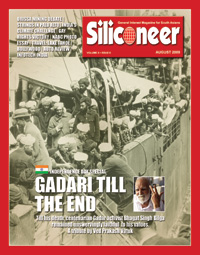 (Right): (Cover page background): A view of the crowded conditions on the Komagata Maru in 1914. The ship with Indian immigrants was turned away after a two-month-long standoff in Vancouver, triggering deep resentment in Indians in North America. Many Indian immigrants felt that colonial rule of their motherland made them more vulnerable to racial prejudice, and In a few years, the Gadar Party was founded in San Francisco with the express mission of freeing India of British rule. (Right): (Cover page background): A view of the crowded conditions on the Komagata Maru in 1914. The ship with Indian immigrants was turned away after a two-month-long standoff in Vancouver, triggering deep resentment in Indians in North America. Many Indian immigrants felt that colonial rule of their motherland made them more vulnerable to racial prejudice, and In a few years, the Gadar Party was founded in San Francisco with the express mission of freeing India of British rule.
And that the grand monument where we were sitting was not built with the help of any government but by people’s money. In fact, in the 1950s when the Indian Consulate was demolishing the Gadar headquarters, a three-story building in San Francisco, from which struggle for India’s freedom was waged for more than three decades, the Desh Bhagat Yadgar Committee in Jalandhar was building this monument dedicated to the memory of our martyrs. When every document of the Gadar Party was almost being destroyed by the consulate, every effort was being made by the Desh Bhagat Yadgar Committee to secure any piece of paper from all over the world to preserve that history. Compare that with the situation with the Gadar Memorial Hall, built with the money of Indians abroad, which remains closed to the public, so much so that even a meeting to pay tribute to this last survivor of the Gadar movement was not permitted by the consulate. And that, too, in the name of preserving the sanctity of the monument and the spirit of the Gadari babas. But that sanctity and spirit is not violated when this building is used as a residence of the driver of the consulate. It is not violated when a marriage celebration takes place in which meat and liquor is freely served. In fact every effort is being made to make sure that no revolutionary message of the Gadari babas is sent from this hall. It has become a propaganda place for the government’s proclamations. There is nothing in this Gadar Memorial Hall in San Francisco, which the government has contributed to preserve or promote the memory of the Gadaris. All the portraits are donated by a freedom fighter, late Surya Prakash Anand, who was in jail with some Gadari babas in 1930s. There has been no effort to secure any document or promote the hall by the consulate.
On the other hand, Desh Bhagat Yadgar Hall has become the true shrine for the revolutionary history of India. Its foundation was laid in 1920 by the renowned Gadari Baba Wasakha Singh, who sacrificed all his property by donating it to the party and risked his own life by going to India after World War I was declared to fight the British. While serving the harshest jail sentence in the Andaman and Nicobar Islands, his health gave up. He was released in 1920 and it was with his inspiration that Desh Bhagat Parivar Shahayak Committee was founded to help the families of those patriots, who had lost everything and who were serving long jail sentences or were hanged. The committee compiled a list of the patriots and raised funds to support their families economically, to provide facilities for their children’s education, to fight the court cases, to provide funds for the family members so they could visit the jailed persons. The same committee was transformed in Desh Bhagat Yadgar Committee in 1955 with the aim to preserve the history, to educate the masses about our freedom movement, to inspire common people to uphold the revolutionary heritage of the Gadar Party, Babbar Khalsa, Akalis, Kirti-Kisan Party, Naujawan Bharat Sabha and other revolutionary organizations. Baba Bilga and his comrade freedom fighters have built this monumental shrine which is unique in India. Especially in the last ten years, since Babaji became the president of the committee—he held other positions before- the Yadgar Hall has expanded its activities. Its exhibition hall contains the portraits of hundreds of martyrs with the description of their lives.. Its library contains more than 17,000 volumes on the revolutionary history, and many manuscripts, interviews with revolutionaries, and other documents. By going from village to village, traveling from country to country Babaji and his comrades had been collecting materials for the library relentlessly. People have come to the U.S. and the U.K. to collect materials related to Gadar trials. He had asked the Supreme Court of India to approach the Supreme Court of Pakistan to request the transfer of hundreds of thousands of pages of court proceedings related to the trials of the revolutionaries.
Yadgar Hall has now several big conference halls, a theater, guest houses and other buildings.
Babaji took me with him and gave a tour of the various buildings in the complex. Just like a father who wants to teach his child the heritage of his forefathers.
In the office of the Yadgar Hall people keep coming all day. Persons of all walks of life—writers, political leaders. social reformers, historians and just common folks—they all are treated with the same attention and affection. Tea is served, at lunch time lunch is provided in the common dining room to all who are there. Every one serves him/herself and after eating washes his/her dishes. It reminds me of the tales I have read about the Gadar heroes, who all lived, cooked, ate, cleaned, slept and worked together in the Gadar headquarter in San Francisco in 1910s. Babaji, too, washed his own dishes. At the age of 90, he lived what he preached.
My next meeting with Babaji took place in 2000. Raj Babbar had made a film on the life of Udham Singh. It was a success. He wanted to make a film on the Gadar movement. He came to my house in Berkeley and asked me to be a consultant. He asked me to come to Jalandhar, where we were going to interview Babaji and other revolutionaries. When I reached there, the interviews had already started. Upon my arrival, Babaji stood up and enthusiastically said, “Vedji had come. Let us hear him.” As if I was the real expert and historian. His politeness and love humbled me.
About twenty years ago, Babaji invited his young workers and told them that in order to spread the message of the revolutionaries to the masses they should organize Gadar melas. The melas should take place in the last week of October and should end on November 1. November 1 was the date when in 1913 the first issue of the Gadar weekly was launched in Urdu in San Francisco Bay Area with the proclamation, “Today we declare war against British rule from the foreign soil in our language.”
The first Gadar mela was organized in 1992 in Jalandhar.
These melas involved people from all walks of life. People from faraway villages and towns came to participate in it. Dozens of folk theater companies, folk singers, poets, historians, social reformers, students and scholars, all gathered there. Many publishers organized book exhibitions, artists had their own stalls. For three/four days the place was filled with thousands of visitors. People slept and ate on the floors of big halls. The atmosphere was the same as found in any religious melas. Only here the object of worship were Bharat Mata and its patriotic children. Seminars were arranged, students participated in debates. Leaders from all persuasions came. No one was really untouchable there. I heard the rebel Arya Samaj leader Swami Agnivesh speaking there. I myself had the privilege of addressing the audience there. I emphasized the fact that the vision of Gadar Party was global and it was the only party where a dalit Mangoo Ram could feel liberated from the oppression by working and living with persons like Har Dayal, Sohan Singh Bhakna, Hari Singh Usman, Sarabha, without feeling inferior. It was the party that gave him his dignity and made him feel that he was a human being. Many people felt that after returning to India Mangoo Ram promoted casteism. But I emphasized the fact that after his return to India, he was treated like a dalit again and the victim should not be punished for the crime of the oppressors. Dalit thinkers in the audience were pleased with my speech and it did have an impact on the members of the committee too with the result that the next Gadari mela was dedicated to Mangoo Ram. And later the Gadari melas in California, which along with melas in Canada, were inspired by Babaji, also were dedicated to Gadari Mangoo Ram.
It was on Baba Bilga’s inspiration, that the grave of the scholar Gadari Maulana Barkatulla was discovered in Sacramento. Barkatulla died in 1920s while addressing a meeting in California.
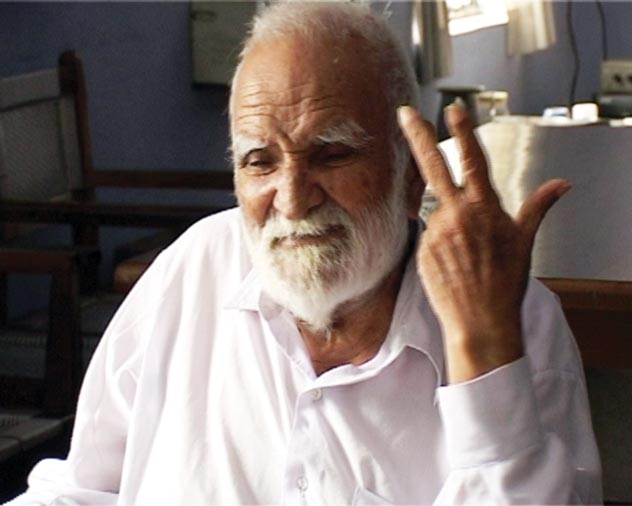
(Above): Bhagat Singh Bilga
Life Sketch
Bhagat Singh Bilga was born on April 2, 1907 (the same year Shaheed-e-Azam Bhagat Singh was born in September) in Bilga- a village in Jalandhar district of Punjab. His father was Nambardar Hira Singh and his mother’ name was Milan. When he was two years old his father died and he was brought up in his maternal grandfather’s house. He attended Malva Khalsa High School from where graduated in 1925 in the first division. One year later he roamed around the globe—Kolkata, Rangoon, Singapore, Hong Kong, Chile— in search of a job until he reached Argentina. He gained employment there as a railway clerk. Thousands of his countrymen had migrated to Canada and the U.S. in the beginning of the twentieth century and they had learned that they were not really wanted anywhere, being citizens of a colonized country. Their wretched conditions and racism of the West turned them from destitution to revolution. They founded the Gadar Party in 1913 to fight the British and liberate their country. During World War I they sacrificed everything and thousands of them went to India to wage war against the Empire. In that process many of them lost their lives, many went to prison for a long time. Those who were left behind also suffered. Many of them were tried in San Francisco for conspiracy and went to jail.
When Bilga reached Argentina, the Gadar Party was a party just educating the people in the West about India and her aspiration. In Argentina, he came into contact with the hero of the “pagree sambhaal jatta” kisan agitation, Ajit Singh, uncle of Shaheed-e-Azam Bhagat Singh, who was exiled from India and Gadar leaders Teja Singh Sutantar and Ratan Singh. He joined the Gadar Party and he gave most of his earnings to Naujawan Bharat Sabha and Kirti Party. Soon he was elected the general secretary of the Argentina branch of the Gadar Party, while Dalip Singh was elected the president. In 1931 when Bhagat Singh, Rajguru and Sukhdev were hanged by the British in India, the party organized strikes by Indians in factories, many rallies and passed condolence resolutions. The party brought out the Argentina edition of the Gadar weekly. In 1932 the party ordered its 76 life members to go to Moscow to be trained in marital arts and the ideology of revolution. Bilga was among them. About the experience of these two years, Bilga writes, “Being peasants and workers we understood the problem of exploitation easily and equally it was easy for us to accept the thinking of socialism.”
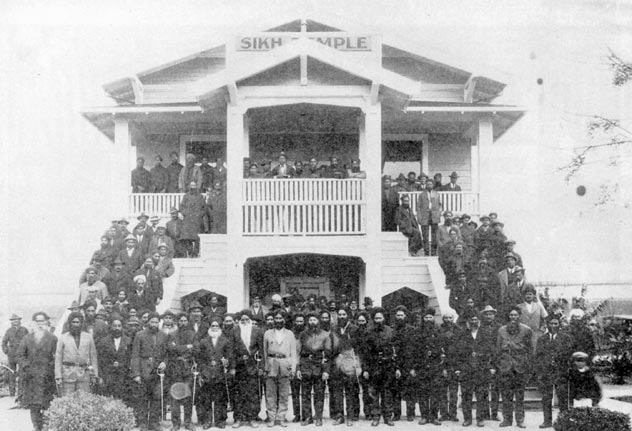
(Above): Sikh Temple Stockton, 1912. The temple was a key center for activism and organizing for Indian immigrants.
In 1934 Bilga along with other trainees was asked to come to India. As he was under the continuous scrutiny of British intelligence, and had no passport of his own, it took Bilga a year to reach India traveling on a fake passport under the name of Milki Singh and going through Paris, Berlin, Colombo, Kanya Kumari, Nagpur, Kolkata and Kanpur.
For the next two years he remained underground in Kanpur and Kolkata, where he organized workers as a trade union leader. He played an important role in a workers’ strike which shut down the Juggilal Kamlapat Cloth Mill when a worker was beaten to death. .He founded an underground press in Kanpur and Lahore to propagate the cause of freedom. Between 1936 and 1947 Bilga spent several years in prison for his revolutionary activities. In 1938 he was elected the general secretary of the Jalandhar District Congress Committee as well as a member of the All Indian Congress Committee. He supported the socialist wing of the Congress Party and Subhash Chandra Bose.
Bilga’s role in independent India is even more important. When India became free in 1947, Bilga was very disappointed. The dreams of many freedom fighters were shattered when the former English officers were granted life-long pensions to be sent to England, the Indian officers who supported the British were still the rulers, but the soldiers who revolted against the British government were given nothing, the bagi—rebel—villages who lost everything were given nothing and soldiers of the Indian National Army were neglected, Mountbatten remained the viceroy, and bureaucracy remained intact to exploit the masses. The kisan-mazdoor raj of their dreams was nowhere in sight. Only the color of the flag flying over the government buildings changed and so was the color of the rulers’ skin. Therefore Bilga and many other Gadar heroes kept fighting against vested interests. Even in free India jails have become their homes in the interest of the rights of the masses.
Communalism and religious bigotry also raised its head again and again. Bilga and his colleagues had to fight these forces of destruction and evil continuously. During the height of the Khalistan movement, when it was impossible for any Sikh to challenge terrorists in Punjab, many times Bilga stood alone. He went from village to village on his bicycle to spread his pluralistic ideas. The fact that he had no weapons to protect himself never entered his mind.. Bilga told Kuldip Nayar that he saw more than two hundred young intellectuals being butchered by the fanatics: “I once went to a condolence meeting of a slain Hindu and addressed Sikh mourners there against the (Khalistani) movement. After coming back home, I sat in the courtyard awaiting my death. I desperately wanted to be a martyr.”
Bilga was deeply disturbed what he saw in free India. Again and again he lamented the fact that the picture of India was not the same as conceived by freedom fighters. Government policies remain biased. They are drafted by the elite and middle class and the poor people are bearing the brunt. “We had never dreamt that a situation shall arrive when an honest and well meaning prime minister like Manmohan Singh would just weave the magic wand of a few numerals to falsify the claim that the country is doing well,” he once said.
He kept writing articles and books in Punjabi. In 1936 he wrote a book, Socialism Kya Hai? (What is Socialism?) in a simple language so the masses can understand. His other books are; Gadar Lahar Ke Anphole Warke (The Unfolded Pages of the Gadar movement), Mera Vatan (my country), Meree Samajh, Meree Soch (My Understanding, My Thinking) and Baba Gurmukhsingh Kee Jeevanee (Biography of Baba Gurumukh Singh.) Besides his own writing the history sub-committee of the Desh Bhagat Yadgar Committee has published many books on Indian revolution and two journals called Virsa and Heritage in Punjabi and English.
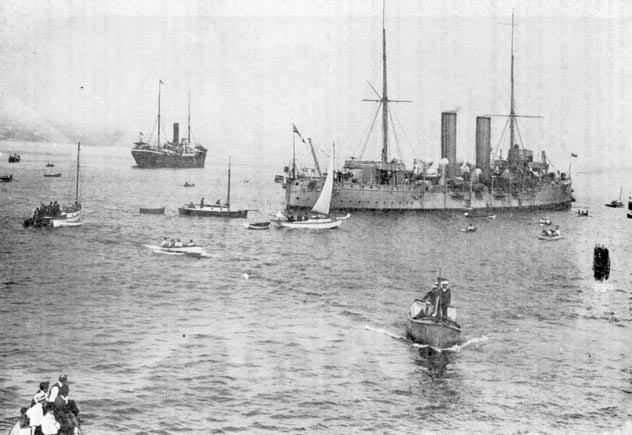
(Above): Komagata Maru as it leaves Vancouver in 1914. The ship’s Indian immigrants were not allowed to disembark and the ship left port after a two-month-long standoff.
Even from his death bed in England, where he was taken for treatment and to be with his sons Kulbir and Prem Sanghera and grandchildren in the last year of his life, he told a reporter during the last Lok Sabha election: “Youth holds the key to development and the future of the nation lies with them. Politicians have failed the people for so long that it is up to the people now to relive the dreams of the freedom fighters. My appeal is to vote for development, solidarity and secularism of the nation.”
Bilga, who died on May 22, lived the life of a widower for more than 35 years, His daughter Kranti died young. He fondly remembered both his wife Jannat and his daughter. He always felt that women suffered more since they had to carry on the burden of their families when their husbands/fathers rotted in jails.
Bilga’s body was flown to his village and on June 5 his ashes and bones were immersed in river Satluj.
In his death the country lost a voice for the masses, an institution, a living history, a, visionary and in the words of Gurmeet, secretary of Desh Bhagat Yadgar Committee, a youthful Baba, who never asked anything for himself and gave all he could in the cause of left unity and a pluralistic and just society free of all exploitation. With him truly an era ended, since he was the last surviving member of the legendary Gadar Party. |